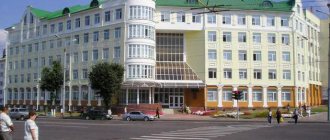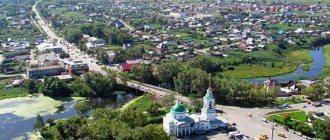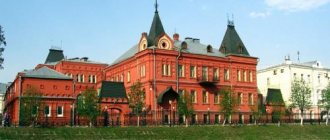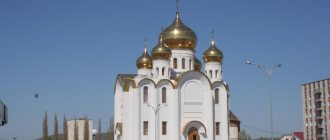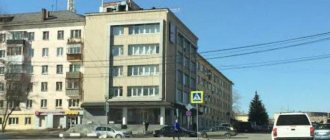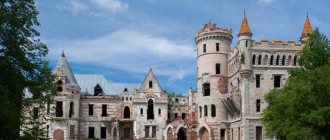How many people live in the city of Orel, what is the population as of January 1, 2022, what number of people live officially, is it increasing or decreasing in municipal areas, growing or vice versa, decreasing, decreasing and where?
Statistics have always interested people and no matter what it concerns, and we are interested in it for a variety of reasons, out of curiosity and for other, very different reasons, we want to know about something, for example, about a given topic, which we will deal with below.
Industrial development
Initially, the population of the city of Orel consisted mainly of military personnel who faithfully served Russia, protecting the border from raids by Tatar troops. The city is located on the banks of the Oka River. Soon Orel became the center of infrastructure. Since the area is quite favorable, various plant crops grow well in these places. Therefore, it was here that most bread was produced, and the first sailing manufactories and spinning mills were opened. At that time, the population of Orel worked in light industry factories, thereby making an invaluable contribution to the development of the entire country.
Population
The city of Orel is a native Russian city. This is where 95% of people of Russian nationality live. But citizens of other countries also fell in love with this region and decided to settle here. Over the past few years, the population of Orel (the number of Russians) has begun to decline. And at the moment, 5% of the total population is made up of other nationalities. This 5% includes Ukrainians, Chechens, Belarusians and others. The total population for 2016 is about 319 thousand inhabitants.
The total area of the city is 122 square meters. km. There are about 2,650 people per square kilometer.
It cannot be said that all 4 regional centers are populated evenly. For example, the population in the Zavodskoy district is about 110,000 people, and in the Zheleznodorozhny district there are about 65,000 residents. The Soviet district became home to 82,000 citizens, the Northern region accommodated 68,000 people.
Unfortunately, in recent years, population migration has been acutely felt in Orel. In addition, the death rate in the city is increasingly exceeding the birth rate. The growth/loss today is only 5%. First of all, this indicator is influenced by mass divorces, and therefore the birth rate decreases. The younger generation tends to move to more promising cities, which is why the number of elderly people predominates in Orel.
Some analysts are inclined to argue that Orel today is in a real demographic hole.
But these are just numbers that, although they show facts, still cannot tell the full story about the population of this amazing city.
Orel is a city of students. There are many educational institutions located here. Young people from different countries receive education here. The only pity is that after this they all strive to leave the city as quickly as possible. Very few young specialists stay in Orel. The main professions are economics, computer technology, foreign languages and jurisprudence.
The population of Orel mostly consists of intelligent people with higher education.
Is it worth moving?
Is it worth it to move to Orel for permanent residence? Orel is a small provincial town, it has its pros and cons.
It is quite difficult for representatives of humanitarian and creative professions to find work. Workers and engineers are highly valued here.
Orel is neither an industrial center nor a resort. But this place is perfect for a secluded, measured life.
You can most often meet children and pensioners on the streets. There are few young people, although there are a number of universities in the city.
There are many schools, but there are huge queues at kindergartens. It is impossible to place a child there without an “additional payment.”
Higher education can be obtained at the following universities:
- Russian Academy of National Economy.
- Oryol State University.
- Law University.
- Agrarian University.
- University of Culture and Arts.
Advantages and disadvantages of the city of Orel
Negative reviews about the city
Below are real reviews from people who moved.
Anton : “Orel is a city of trade. The industry was well developed under the USSR, but now it is clearly going through difficult times. The standard of living is acceptable for the province, but many work two or three jobs.
Many have loans, mortgages, debts - they live beyond their means. The average salary in Orel is about 15,000. Most people work outside their specialty.
Those who are smarter and more capable try to get out of here in order to realize themselves. The rest do not live, but survive.
The quality of goods and products varies greatly. On the market you can mainly find both Chinese and domestic products.
Factories are gradually dying out. I don’t know what this is connected with, the general crisis or the wrong actions of local authorities.”
Maxim : “I’m not delighted with life in Orel. I’m looking forward to the end of my contract with the company, after which I’ll move to St. Petersburg.
The main advantages of the city: mild climate and beautiful nature. I don't like anything else here.
The city seems miserable and depressing. Medicine is in a stagnant state; the X-ray room in the state clinic looks more like a torture chamber. In general, getting sick in Orel is difficult. There are huge queues at clinics, and there are always not enough coupons.
People are rude and kind of tired. However, I don't blame them.
Another significant disadvantage is the terrible “gas attack” coming from old, unkempt cars. Monstrous exhaust emissions make life difficult and do not contribute to improving the environment in the city.
There is little work, or rather, practically none. Locals try to go to work on a rotational basis in Moscow or the North. There are often traffic jams on the way out of the city. There is a problem with purchasing travel tickets.”
Watch a video about the city of Orel.
Positive reviews about the city
Alisa : “Having lived in Smolensk for almost 10 years, I am sincerely convinced that Orel is a calm, cozy city. Life here is very measured and stable.
Main advantages: the city is relatively clean, there are many historical places. The Oka River is very beautiful. And, in general, nature here is beautiful with a calm, poetic beauty.
The eagle may seem too calm to many. There are very few cafes and pizzerias in the city, and there is not much entertainment.”
Margarita : “It’s a nice, quiet city. Of course, young people are bored here. It's probably good here only for pensioners and children.
I live here recently, I came from Moscow precisely for the long-awaited silence. I was lucky to buy a home in a residential area. I like everything here.
The streets are cleaned, very clean, the city is quite green. There are many parks and squares. There is a theater where good plays are staged.
The climate is mild, very cold and very hot rarely.”
A little history
The city was founded during the reign of Ivan the Terrible. Therefore, it is not difficult to calculate how old he is. Orel was built in the form of a powerful fortress, which was supposed to protect the border from foreigners. Over time, it turned out that the land here is very fertile. After some time, the population of the city of Orel began to increase rapidly. It began to be populated not only by the military, but also by nobles who contributed to the development of agriculture.
But besides all these functional purposes and advantages, Oryol turned out to be a very picturesque city. Nature was practically untouched; incredible landscapes surrounded this place. It was hard not to fall in love with these lands; many came here to admire the beauty of nature. And it is not at all surprising that thanks to the contemplation of this beauty, a large number of writers, poets and artists appeared. Thanks to such rapid development, Orel has become an indispensable unit of the country.
Attractions
Oryol is rich in sights. The population of the city worked tirelessly to create the unique atmosphere that reigns here today. There really is something to see in the city. It will not be possible to visit all the sights in a few days. First of all, you need to visit the Nikolo-Peskovskaya Church, the Archangel Michael and the Fomichevs’ house. These are old buildings from 1795, they are built of brick, incredibly beautiful, everyone should see them if possible. Some of these buildings house educational institutions that have their own famous alumni.
The surprising thing is that the appearance of the buildings has not been changed since their construction; they were preserved in their original form. These buildings were taken under state protection and are architectural monuments. To the surprise of everyone, not a single educational institution was closed or moved to another building. The city of Orel is famous for such establishments. The city's population also consists of students who have the opportunity to study in historically significant places.
The city of Orel has become a kind of cradle for famous people. Many of them were able to make a significant contribution to the history of the Russian state.
Oryol bus stations
The bus station in Orel is located at st. Avtovokzalnaya, 1. The bus station building is located opposite the Sovremennik cinema. The bus station's operating hours are from 5:30 to 22:30, every day, without breaks. In the bus station building, passengers have access to a storage room for luggage and personal belongings, a spacious waiting room, a cafe, and a medical center.
Popular routes of regular buses: Baklanovo, Belgorod, Bashkatovo, Voronezh, Golokhvastovo, Dmitrovsk, Zheleznogorsk, Zalegoshch, Kaluga, Kiev, Krasnaya Zarya, Krivoy Rog, Krasnaya Roshcha, Lavrovo, Livny, Lipetsk, Mikhailovka, Moscow, Mokhovoye, Novodmitrovka, Ryazan, Smolensk, Tambov, Tula.
Orel - the city of inspiration
There are a large number of house museums throughout the city. The city of Orel is permeated with an incredible atmosphere of creativity. Its population was not only ordinary citizens. It was here that Bunin, Fet, Granovsky and Turgenev lived and worked. In addition to writers and historians, famous sculptors and artists were born here. Galleries and museums are dedicated to the work of these people, which are also worth visiting.
Residents of the city love a slow life and various types of walks. All conditions have been created for this here. The ideal place to spend free time is the “Noble Nest”. Another cozy place is the Turgenev gazebos. If a tourist is looking for peace and quiet, then he simply must visit the Oka and Orlik Spit. There are not many people here, so you can calmly enjoy relaxation and silence.
Oryol is also famous for its unusual architectural elements. The city's population is proud of its sculptures, one of which is an eagle created from wire and straw. But the residents did not stop there, and soon a whole series of similar works appeared. So the world saw a bear made of grass and so on. Despite all the difficulties it had to go through, the city retained its identity. Now it is a large industrial center.
Must-see sites
- Lenin Street. This is the main street of the city, and it is pedestrian, so you can walk along it calmly. While walking you can see very interesting buildings, beautiful architecture, and visit numerous cafes. There is a park adjacent to the street.
- Central park of the city of Orel. Harmony always reigns here. This place is loved not only by tourists, but also by the local residents of the city. There are always a lot of people in the park, but this does not spoil the atmosphere of calm and tranquility.
- Walk on a river bus. Anyone will be interested in looking at local species, especially since they will leave few people indifferent.
- Theater "Russian Style". The spectator is at the epicenter of the events, the hall has a capacity of 50 seats, so it is very difficult to get to the performance. It is best to book your tickets before arriving.
- Cathedral of the Archangel Michael (Assumption). The temple surprises with its beauty.
The city has several beaches, but due to active river transport, the water is polluted. It is not advisable to swim here, but you can sunbathe, because the beaches are well-maintained and have everything you need for relaxation.
Oryol is a unique city, unlike others, a place worth visiting and relaxing in your soul.
The indigenous population of Orel tirelessly cares about its development and well-being.
Location of Oryol
It is located on the Central Russian Hill, which is located in the European part of Russia. In order to understand where the city of Orel is located on the map, you need to look south from the capital (Moscow), the distance is approximately 380 km. It is more than 1000 km away from St. Petersburg. Near the Oryol region there are Kaluga, Tula, Kursk, Bryansk and Lipetsk. They have common boundaries.
Orel is a city that is the center of the region. Its length from south to north is about 150 km, and its width (west-east) is more than 200 km. The Oryol region is the smallest in Russia. It also has the smallest population.
Ecology of the city
Orel is a city with a large number of squares, boulevards and park areas. The May drought had an adverse effect on the trees - their appearance noticeably deteriorated. Therefore, every year all diseased plants are carefully uprooted and replaced with young ones.
In spring and autumn there is an active fight against harmful insects.
The main problem of urban ecology is illegal cutting of trees. This is happening against the background of active construction of the city.
The Orlik and Oka rivers are the main sources of drinking water. According to experts, its quality is not the best. In 1/3 of all water bodies in the city, the water has an unhealthy tint and does not meet sanitary standards.
Population
Oryol, whose population is decreasing every year, is considered an original Russian city. The indigenous inhabitants, of course, are Russians. In percentage terms, they are about 95%. However, other nationalities also live in the territory, although there are fewer of them - 5%. There are less than 2% of Ukrainians in Orel, 1% of Chechens, Azerbaijanis, Belarusians and Armenians, and 2% of other nationalities.
By the beginning of 2000, the population was about 330 thousand people. However, by 2014 this figure had decreased by approximately 13,000 (317 thousand).
Utility costs
From July 1, 2022, the cost of utilities in Orel has increased. Now prices for housing and communal services look like this:
- Electricity supply - 3.62 rubles/kWh.
- Water supply - 15.81 rubles/m³.
- Water disposal - 13.19 rubles/m³.
- Heating - 1804.18 rubles/Gcal.
- Hot water - 118.47 rubles/m³.
On average, Oryol residents pay up to 4,000 rubles/month for housing and communal services. The final amount is influenced by factors such as the area of the apartment and electrical energy consumption.
Recently, a housing and communal services reform was carried out, which caused discontent among city residents. Now part of the common house debt is added to the monthly amount.
If the house is inhabited by persistent defaulters who are in debt to the state, then the corresponding amount is distributed among the neighbors.
Cultural heritage
“City on the Oka” - this is how those who consider themselves a native resident of such a beautiful city as Oryol affectionately call their native land. The population here honors its history and constantly supports the cultural development of the regional center. Residents respect the works of Russian writers such as Turgenev, Bunin, Fet, Andreev, Rusanov, Granovskaya. After all, these names are known to everyone. In Orel there is a famous cultural monument - the Nobles' Nest (Turgenev's estate). The largest source of the Volga, the Oka River, originates here. The city is also famous for the fact that in 1943, on August 5, the first fireworks went off in Orel and Belgorod in honor of liberation from German occupation. This testifies to the courageous character of the residents.
Orel is considered a “green” city. Both in the very center and beyond, the level of vegetation exceeds 7% of the occupied area.
Climatic conditions
Eagle is located in the forest-steppe zone. The city is located in the center of the Central Russian Upland.
The climate in Orel is moderate continental. Autumn weather persists until mid-September - the fallen snow does not remain for a long time.
Sometimes it rains until early January. Then snow falls and lasts until the end of March. Spring is capricious, windy and dirty.
In summer, the weather can change several times a day. A cool, gloomy morning gives way to a hot afternoon, and in the evening it begins to rain. The hottest month is July.
Temperature by month
| Month | Air temperature |
| January | −5–9 |
| February | −3–8 |
| March | +2–4 |
| April | +3–12 |
| May | +10–21 |
| June | +12–24 |
| July | +15–26 |
| August | +14–26 |
| September | +9–18 |
| October | +3–10 |
| November | −1–+3 |
| December | −2–5 |
City of Orel today
In 2016, Orel celebrates a major date - 450 years since its founding. Currently, the city has turned into a developed regional center, providing employment to more than 80% of the region's population. The main field of activity is trade. The largest supermarket chains in Russia successfully operate in this area. The industry is gradually declining. But previously it was thanks to her that the city of Orel was promising. The population, according to the 2012 census, was more than 318 thousand people, which, compared to previous years, shows a decrease in growth dynamics.
Automobile highways
Federal highways pass through Orel:
- M2 "Crimea" is a highway that has the status of an object of federal significance. It is part of the European route E105. The total length of the route is 720 km. The road originates in Moscow and passes through Tula, Belgorod, Orel, Kursk. The final point of the M-2 route is the state border with Ukraine. The road surface of the route is concrete and asphalt.
- P120 is a public highway of federal significance, the total length of which is 445 km. The route begins in the city of Orel and passes through Rudnya, Bryansk, Smolensk. The final point of the road is the state border with Belarus. The road surface of the route is concrete and asphalt.
- P119 is a federal highway with a total length of 395 km. The route starts in Orel and passes through Lipetsk, Livny, Yelets. The final point of the route is the M6 Caspian highway, Tambov region. The road surface is asphalt.
- P92 is a federal highway with a total length of 206 km. The highway passes through the following regions of Russia: Oryol region, Kaluga region, Tula region. The road surface of the route is gravel, asphalt.
- E105 is a European route that starts in the Norwegian city of Kirkenes and passes through Tver, Moscow, Petrozavodsk, St. Petersburg, Kharkov, Tula, Simferopol, Kursk, Belgorod, Veliky Novgorod, Zaporozhye. The final point of the European route E105 is Yalta.
Monuments
A distinctive feature of the city is its literary heritage (it is the birthplace of the famous writers mentioned above) and architectural monuments. In the very heart of the city - on Karl Marx Square - a mighty horseman rises. This is General Alexey Ermolov. The sculpture was erected in 2012. In the Northern District there is a monument to Alyosha the steelmaker. In the shopping part of the city, opposite the central department store, there is Tankmen's Square, which is guarded by a guard of honor. In memory of the fallen soldiers, an eternal flame burns.
Districts of Orel
The city's territory is divided into 4 districts: Zheleznodorozhny, Zavodskoy, Severny and Sovetsky.
- Sovetsky district is the central part of the city. On its territory you can see attractions, heritage, public gardens, streets, shops and squares. Entertainment events, fairs, and youth competitions are held here. This area is considered privileged; about 81 thousand people live here.
- The Zavodskoy district is a vast territory with a high population density (more than 107 thousand people). The industrial core of the city is located here: factories, workshops, factories.
- The northern region is considered the youngest. It has many not only factories, but also budgetary institutions. It ranks third in terms of the number of inhabitants; about 68 thousand people live here.
- The railway district of the city of Oryol is famous for its main attraction - the station. The symbol of the city - a huge eagle with its wings spread - greets residents and guests opposite the main entrance. The population in this area is about 63 thousand people.
Enterprises and educational institutions
Oryol is often called the “city of students.” The population, especially young people, can freely receive a prestigious education. Here, for every seventh resident there is one student. There are many government and commercial educational institutions in the regional center. The most famous of them: OSU named after I. S. Turgenev, OSAU, PSU, OGIET, Financial University under the Government of the Russian Federation and others.
The largest enterprises in the city are OJSC Orelstroy, CJSC Dormash, JSC Proton, NPJSC Nauchpribor, OJSC Severstalmetiz, LLC Plant named after. Medvedev" and others.
Most Popular Industries
The most in demand is production. Other popular industries include the following:
- Trade, sales.
- Engineering.
- Medicine, pharmaceuticals.
- Construction.
- Transport, car service.
Where to look for work
Orel's largest employers
| Company name | Number of vacancies in 2022 |
| Bilinguals | 1725 |
| Industrial Safety Group | 1713 |
| Gorenje BT | 1709 |
| Group of window companies | 1706 |
| Center | 336 |
| Pyaterochka | 269 |
| Orelstroy | 177 |
| Service+ | 169 |
| Driver Recruitment Center | 167 |
| Magnet | 162 |
The highest paid specialties
The salaries of people whose jobs are considered the highest paying look like this:
- Welder NAKS - 97,000 rubles/month.
- Driver category "E" - 85,000 rubles/month.
- Argon welder - RUR 74,000/month.
- Carousel turner - 71,500 rub./month.
- Operator-adjuster - 68,500 rub./month.
- Machine operator - 66,750 rub./month.
- CNC adjuster - RUR 64,250/month.
- Turner-borer - 64,000 rubles/month.
- Crane operator - 60,000 rubles/month.
- Semi-automatic welder - 60,000 rubles/month.
Famous places in the city
Recreation places where locals and guests spend time are the City Park of Culture and Recreation, Lake Bright Life, and Alexander Bridge.
The multifunctional complex, which includes many shops, cafes, restaurants, and entertainment centers, has gained the greatest popularity among young people. Here are the largest nightclub in the Black Earth Region “Clocks”, karaoke bar “Night”, “Celebration Restaurant” and others. Other famous establishments in the city include the Labyrinth restaurant, the karaoke club Oz-bar, and the Na Privale cafe.
City of Orel: population, description, attractions
Orel is a famous Russian city, which is the administrative center of the Oryol region. The first mention of the city dates back to the 12th century. Oryol is located on the banks of the ancient Russian river Oka, as well as its picturesque tributary, Orlik. It was the rivers that gave the city its name.
The city of Orel is administratively divided into 4 districts, each of which has its own name - Severny, Zavodskoy, Sovetsky and Zheleznodorozhny.
Save on your trip to Oryol!
Basic moments
Today Oryol is a major industrial and agricultural center in Russia. The city has machine-building and instrument-making enterprises, and light industry is developed. In addition, the city is both a railway and automobile center of our country.
Tourists should visit Oryol to admire the ancient buildings of the city, primarily the numerous temples and churches. In addition, the city has museums dedicated to the great Russian writers - Turgenev, Andreev, Bunin, Leskov.
There are approximately 17 hotels of various categories in Orel, restaurants and cafes are open, and the tourism infrastructure is developing.
Climate
The climate of Orel belongs to the temperate continental type. Winters here are moderately cool, and summers can be both hot and moderate in temperature.
Attractions
Oryol's attractions include numerous architectural and religious monuments.
Thus, the most interesting sights of Orel for tourists include: a monument to the poet Yesenin, which stands on the site where the house of his wife, Zinaida Reich, used to be located; monument to the heroes of the Civil War; commercial bank building.
The religious attractions of Orel include numerous temples – the Church of the Iveron Mother of God, the Church of the Icon of the Mother of God “The Sign”, the Holy Dormition Monastery and many others.
Orel's attractions, such as museums, are also interesting, in particular, of such Russian writers as Turgenev, Bunin and others.
The natural attractions of Orel include the spit of the Oka and Orlik rivers. You should also visit Tankmen's Square.
Excursions
First of all, we recommend that tourists go on a sightseeing tour of Orel.
Excursions to holy places from Orel are also interesting: a visit to the Life-Giving Cross in the village of Godenovo, a bus tour to Kostomarovo, a visit to Optina Hermitage.
We also recommend such excursions in Oryol as “The Literary Eagle”, “Nature and People of the Oryol Region”, etc.
In the warm season, we recommend excursions along the Oka River by water transport.
Story
The history of Orel began around the 12th century - at that time the first settlements appeared in local territories.
Orel was founded by Ivan the Terrible in 1566. Initially, the history of Orel is the history of a fortress located on the southern outskirts of the Moscow state.
Under Tsar Peter the Great, the city became a province; at the end of the 18th century it had already become a major center of the Oryol province. In addition, Oryol was also the center of the Orthodox Oryol-Sevsk diocese.
In the 17th century, the history of Orlov was for some time associated with False Dmitry the First, and then the Second. Also at this time, the Poles attacked Oryol.
In the same 17th century, churches were actively erected in Orel, and the Vvedensky Monastery was opened. At the end of the 17th century, a sailing factory opened in Orel.
In 1815, the first theater opened in Orel. In 1868, a railway was brought to Orel.
The city was repeatedly visited by such people as Pushkin, Zhukovsky, Leo Tolstoy, Yesenin, Tchaikovsky, Tvardovsky and many others.
After the Great Patriotic War, 167 residents of Orel were awarded the title of Hero of the USSR.
Today Orel is an attractive city for tourists with good infrastructure, which has preserved its ancient appearance.
Accommodation
Orel hotels are a variety of hotels, both designed for budget tourists (Dubrava, Mayak - from 300 rubles per day), and hotels of a higher category (Ackerman, Orel, Sarkis - from 1' 000 rubles per day and above).
Note that hotels in Orel are located both in the city center and on the outskirts of Orel.
Sports and active recreation
Orel offers tourists various sports, in particular, sports you can practice karate, orienteering, aerobics, athletics, judo, boxing, etc. There is also a football club in Orel. In addition, a popular sport in Orel, common in the Netherlands, is korfball.
Transport
Orel is a major transport hub - it is in this city that 7 major highways converge, which are of national importance. Also, railway lines leading to such cities of the Russian Federation as Moscow, Yelets, Kursk, etc. converge here.
Buses, trolleybuses and trams run around the city. Tourists can also travel around Orel by minibuses or taxis.
A river bus runs along the Oka River in Oryol.
Shopping
The main souvenirs of the Eagle are, of course, various images of the Eagle, the symbol of the city. Be sure to purchase an eagle figurine made of glass.
Other Oryol souvenirs are ceramic magnets and bells with views of the city, as well as plates and cups with an Oryol theme.
You can also buy souvenirs in Orel, such as shot glasses and beer glasses with views of Orel.
How to get there
You can get from Moscow to Orel by bus. The travel time will be 6 hours, the fare will be approximately 600 rubles.
You can also get to Orel from Moscow by train from Kursky Station. Travel time is approximately 5 hours, ticket cost is 500-600 rubles.
In addition, you can get to Orel by car along the M2 highway. The distance from Moscow to Orel is 362 km.
Cost of products
Product prices in 2022 look like this:
Cost of fresh fruits and vegetables in Orel
- Sugar - 40 rubles/kg.
- Flour - 40 rubles/kg.
- Potatoes - 37 rubles/kg.
- Beef - 400 rub./kg.
- Eggs - 40 rub./10 pieces.
- Apples - 100 rub./kg.
- Milk - 40 rubles/l.
- Bread - 20 rubles/loaf.
- Fish - 200 rub./kg.
Urban transport
You can get from one end of Orel to the other within an hour. The following types of transport run around the city:
- buses;
- minibuses;
- trams;
- trolleybuses.
Most city residents prefer to travel by minibuses.
The city bus depot is in poor condition. There are two old buses running around Orel. They have to wait for several hours.
